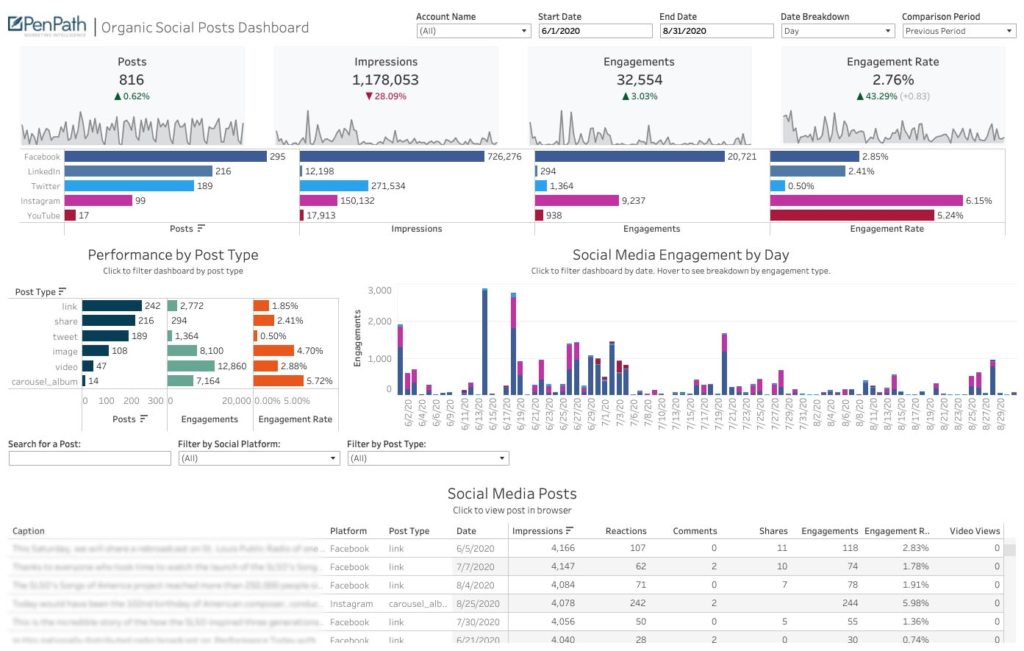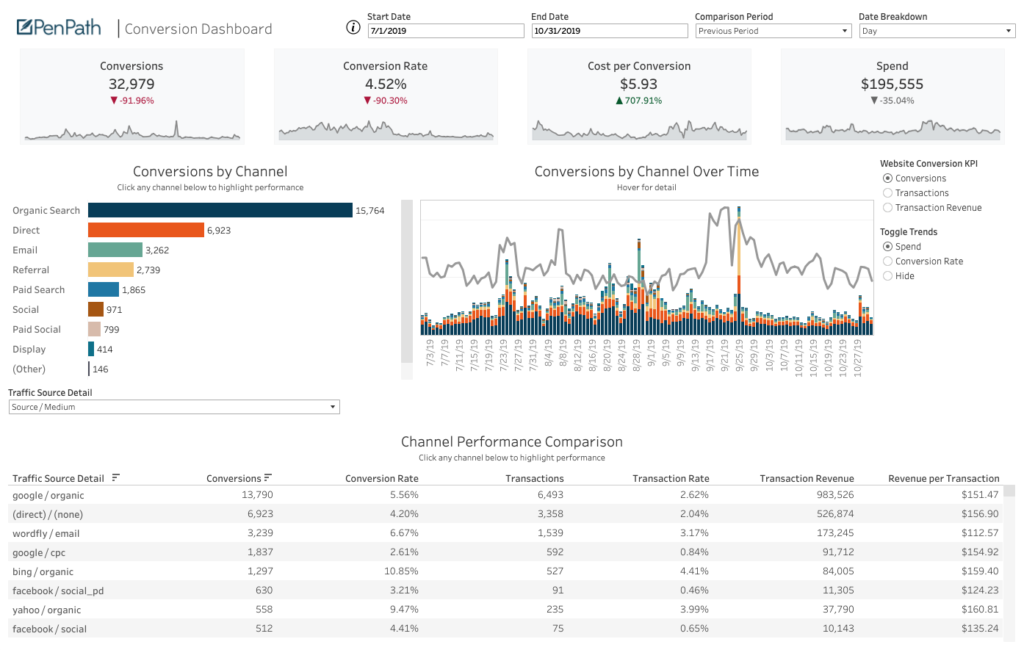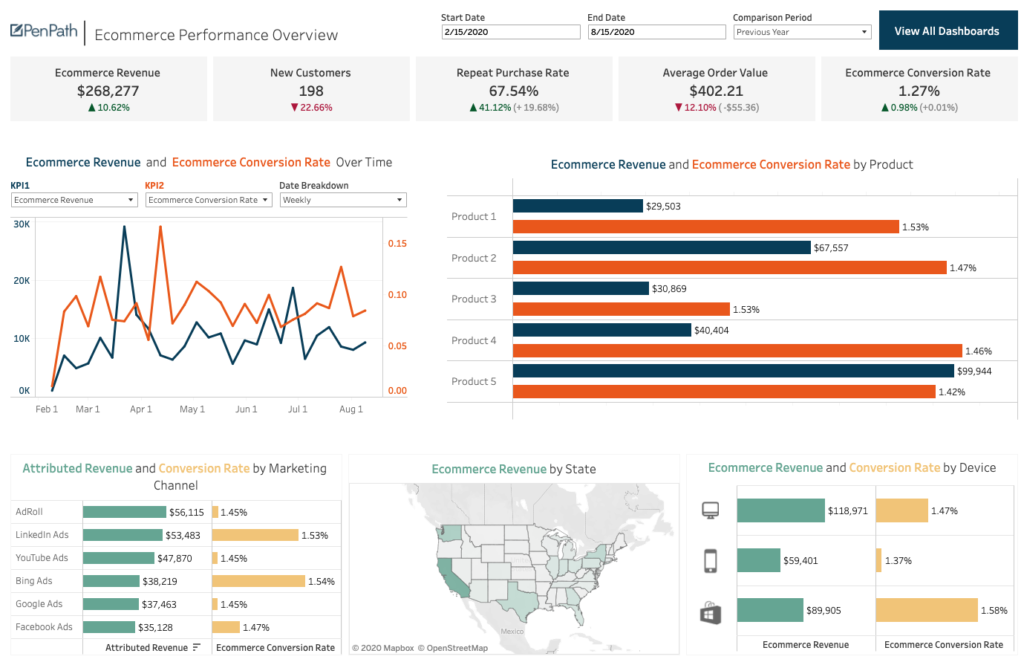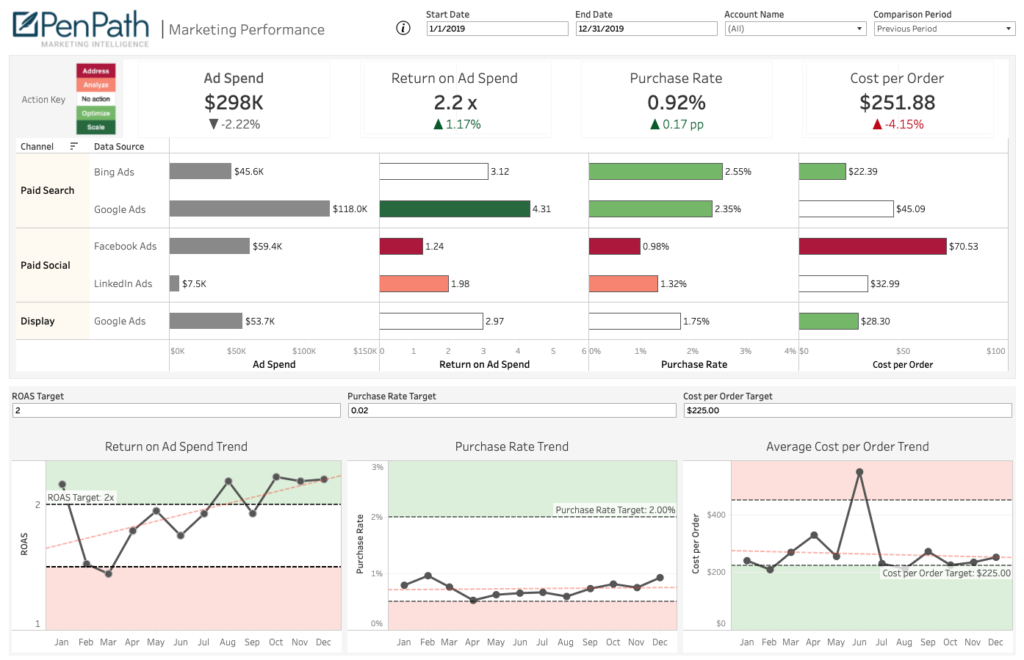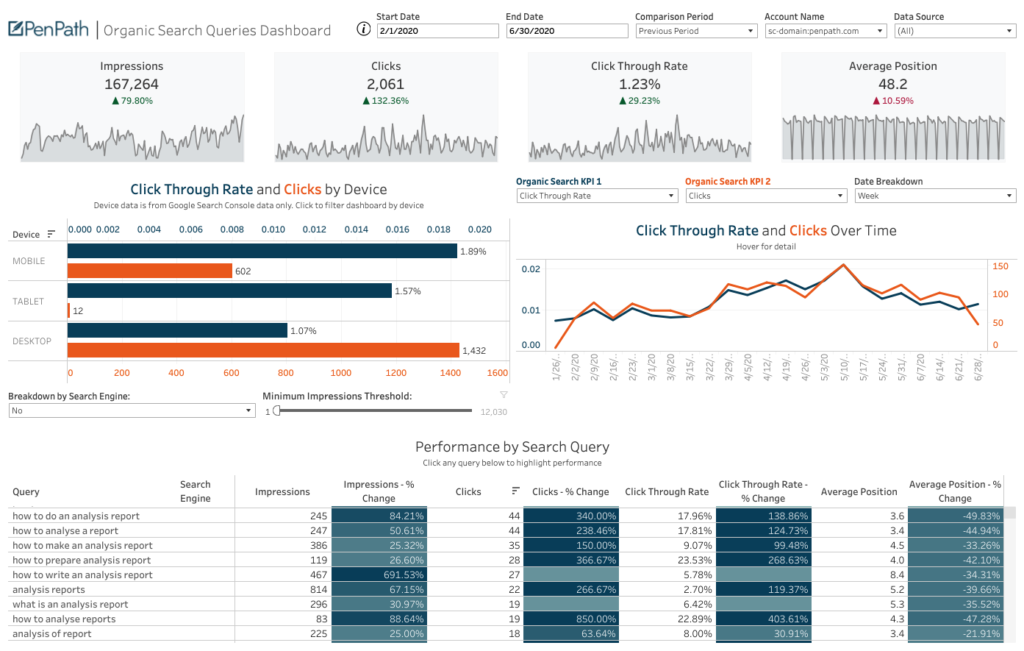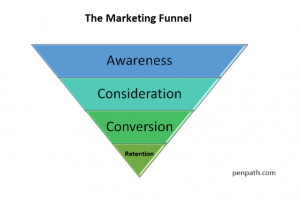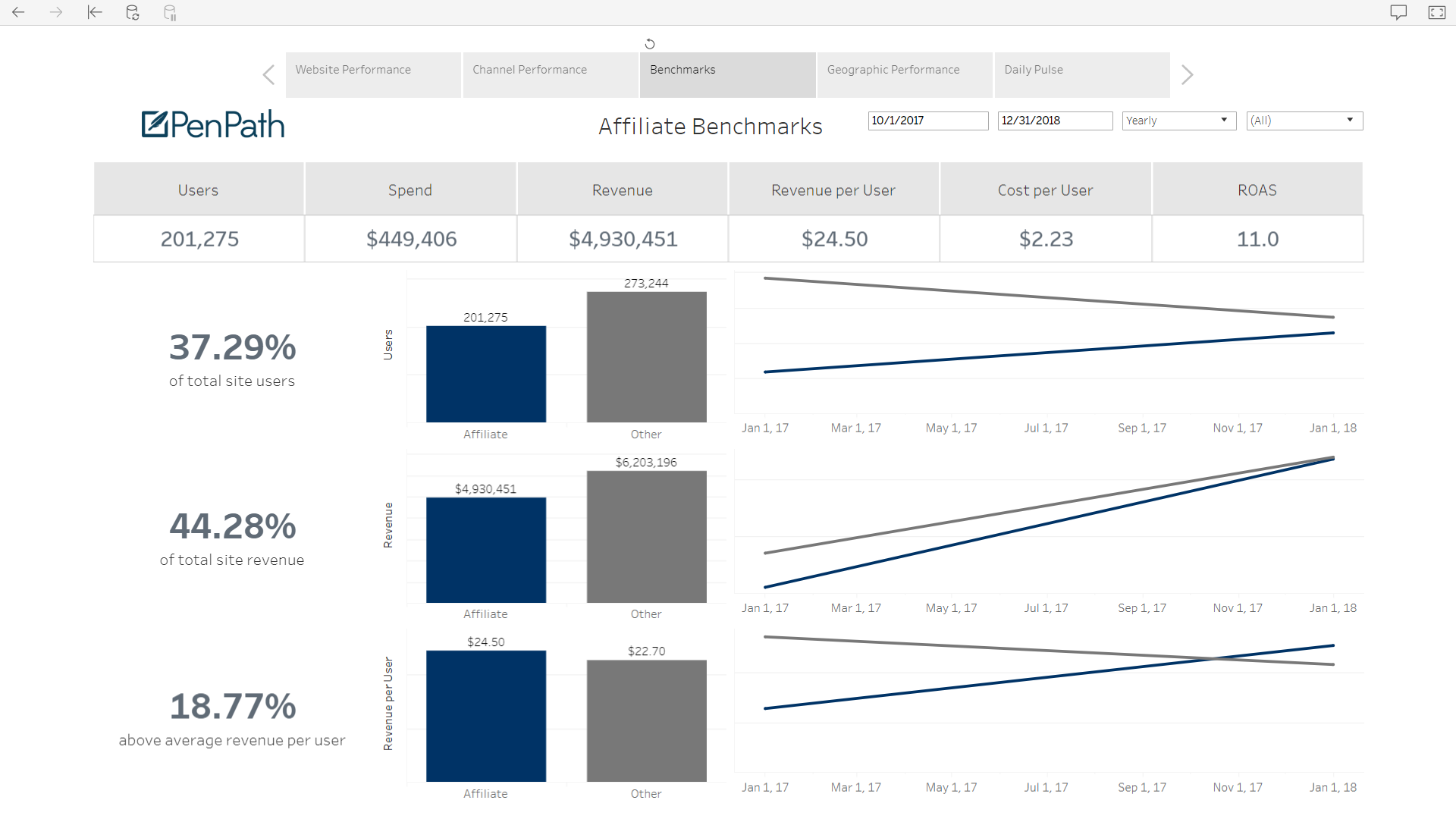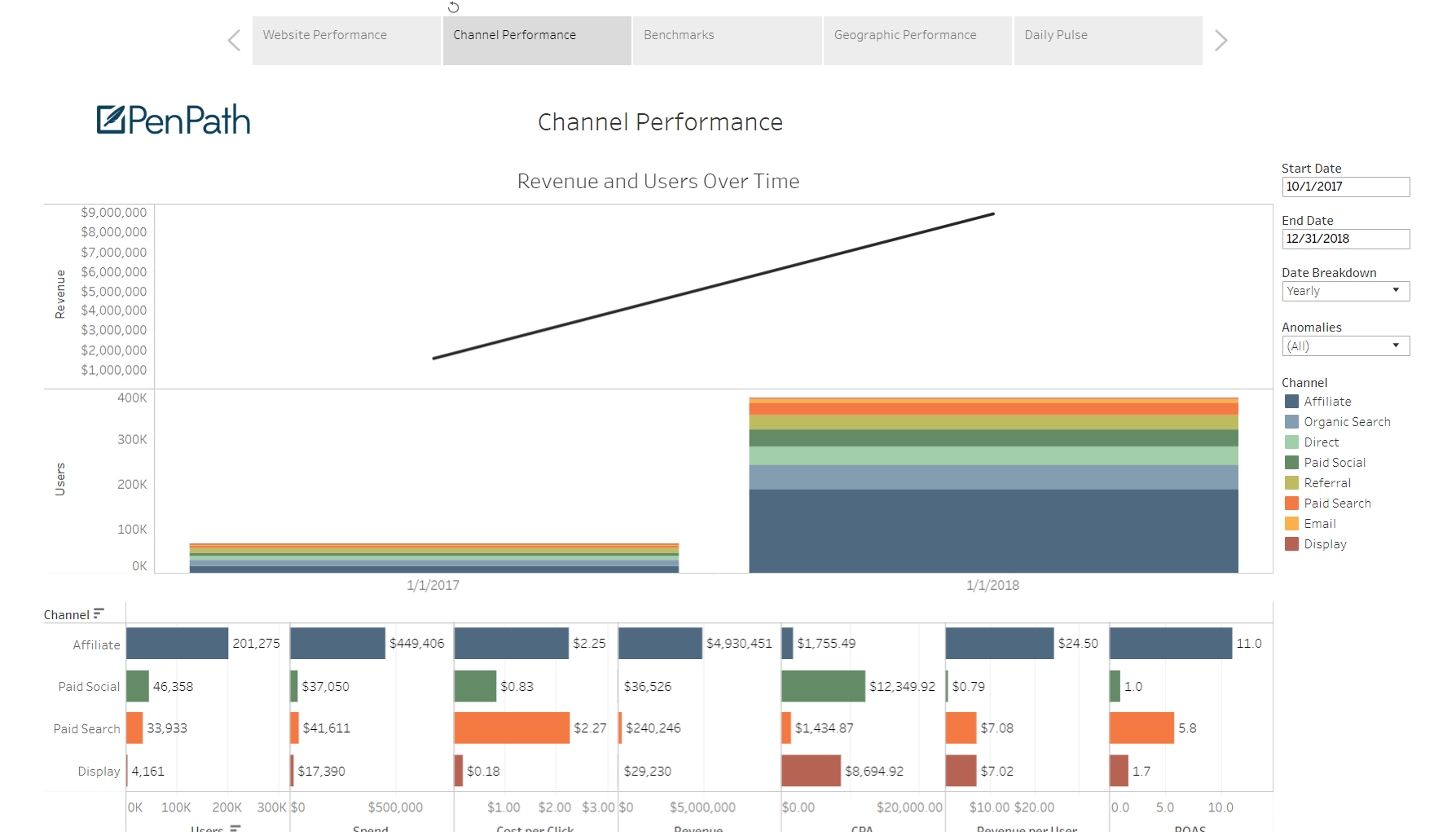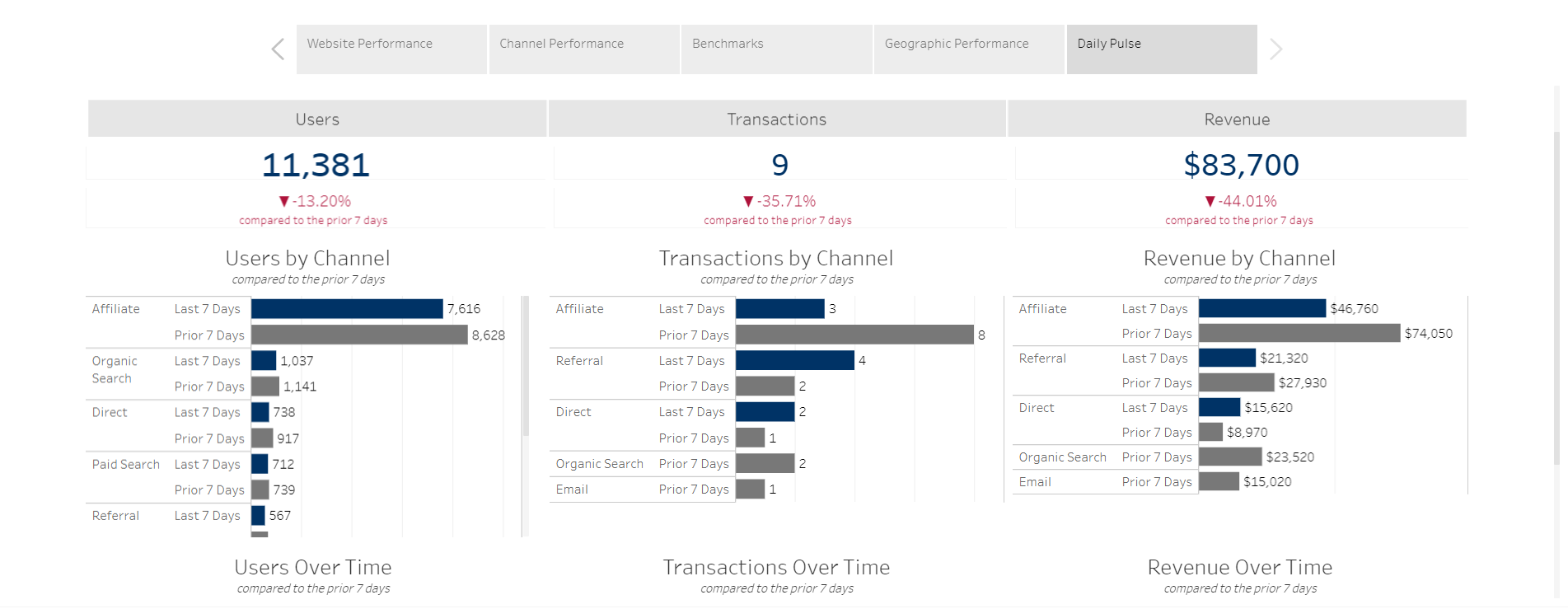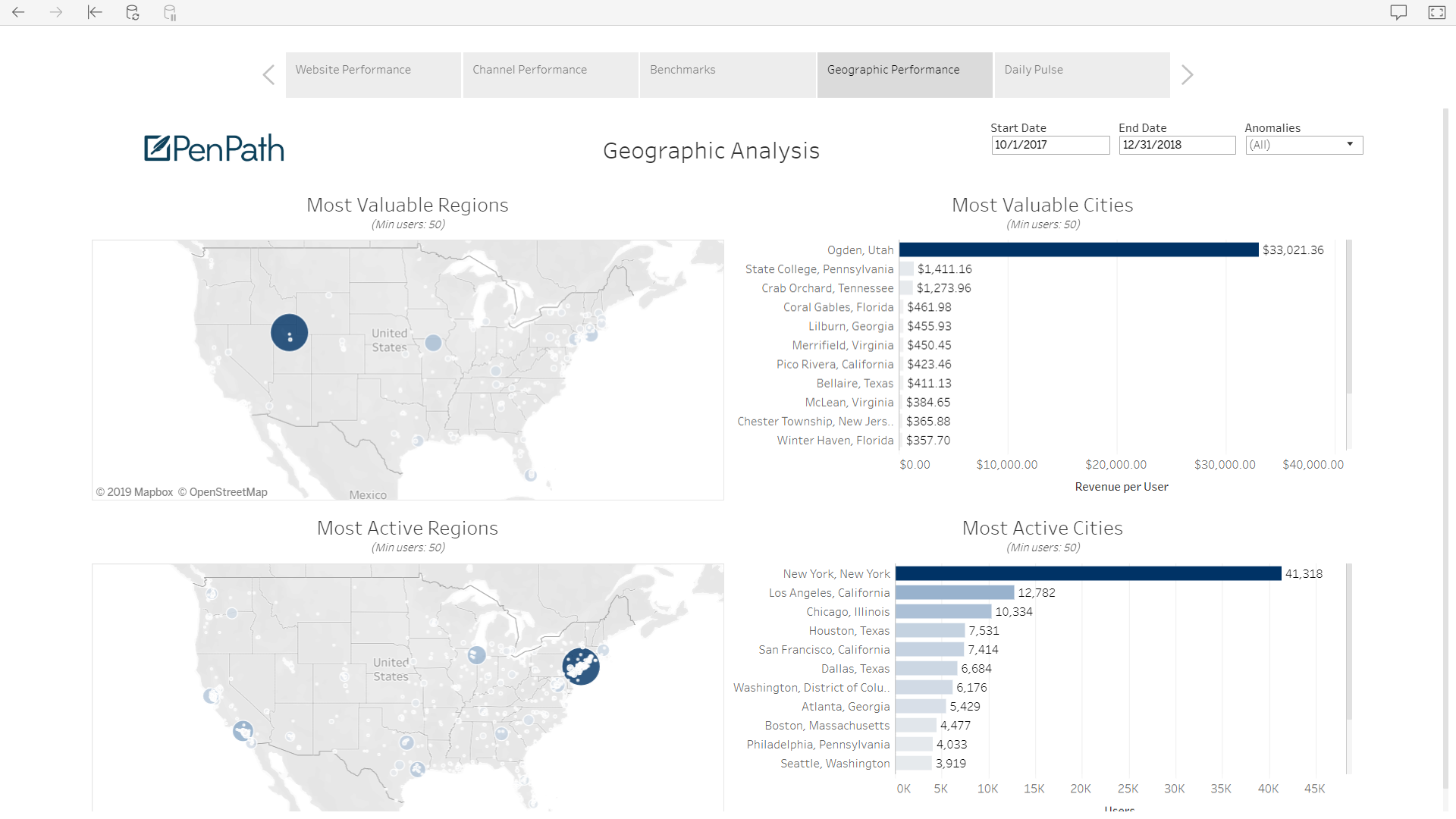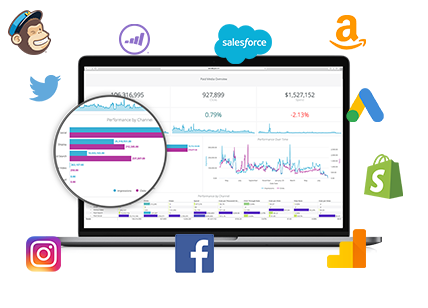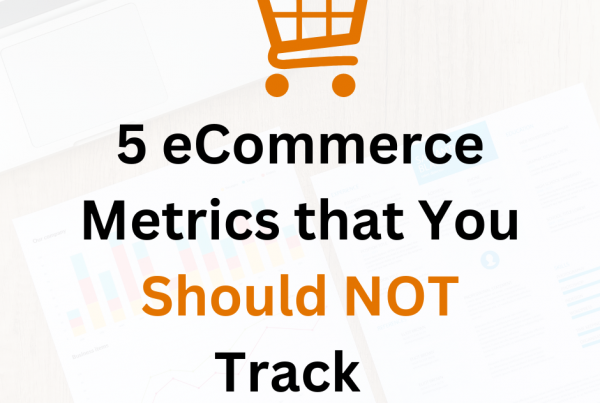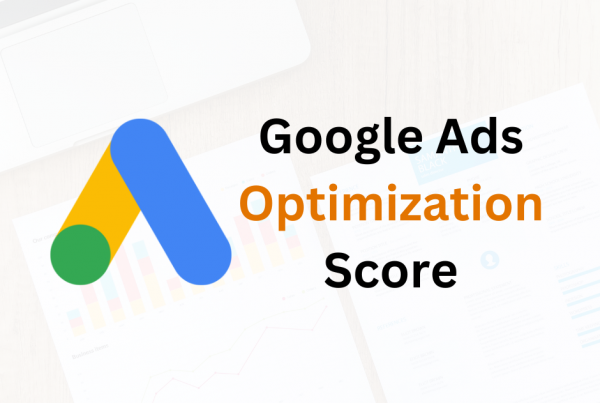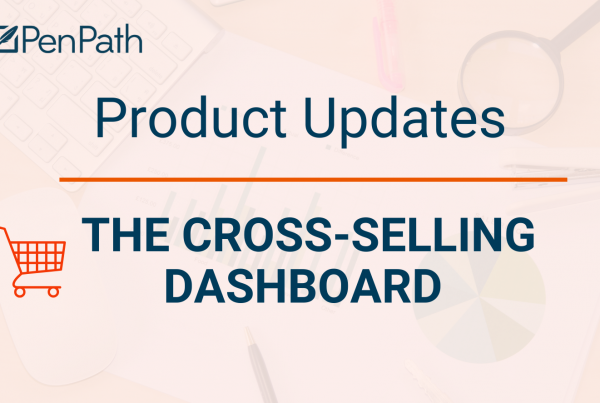Marketers today have a hard job- not only do they have to look at data from different sources, but also do that for each step of the marketing funnel. A typical day in a marketer’s job might involve looking at Salesforce for lead attribution, pulling up some Excel sheets to fill in data gaps, and using Google Analytics for website analysis.
Combining traditional marketing efforts with digital marketing tactics is the new normal. This doesn’t include making campaigns, raising brand awareness through webinars, lead pages and so much more!
This is where Tableau comes in. Let’s look at how it can aid in key marketing stages.
Key Stages In The Marketing Funnel
- Awareness
- Consideration
- Conversion
- Retention
Often, important metrics are stored in different areas which makes streamlining hard. Wouldn’t having Google Analytics and Adwords in the same spot make for deeper analysis of what makes campaigns successful? Figuring out attribution would be a whole lot easier if data analytics was simpler- and Tableau helps with that.
What is Tableau? Tableau is a data visualization software that makes it easy to siphon data from different sources and create rich, interactive dashboards. An example of just how detailed and intricate the software can get is below. It enables anyone to create high-level views as well as very detailed views- more than enough for analysis.
One important problem that digital marketers run across though is how to use Tableau. There’s so many ways Tableau can be used that can be confusing for a beginner. This is why showing what data can be combined at what stage of the marketing funnel can prove invaluable. Here’s 4 dashboards that show exactly how Tableau can be used to make better decisions at every stage of digital marketing using data analytics. Shown below is how those stages interact with each other.
1. Brand Awareness
The first step of the marketing funnel is brand awareness- how are you going to gain interest on your website or bring leads to your company? Here’s how brand awareness data is used to make concrete business decisions.
Marketing Campaign Activity Calendar: Webinars, tradeshows and collaborating with partners is a cornerstone of any company’s marketing efforts. This calendar has that information neatly organized, date by date. A really cool feature in Tableau is the ability to use maps, since the emphasis on the “visualization” part of data visualization is taken pretty seriously. This means another way for upper management to understand what the marketing department is up to and no longer being restricted to just graphs and quantitative data.
Blog Performance Dashboard: Page Views: Before marketers are able to sell products and courses, having an online audience is necessary…this is where online efforts like blogs come in. Unlike Google Analytics where the type of data and charts viewable is restricted, Tableau can be customized to your own company’s needs. For example, notice how in this dashboard the company has a target of 900M views and a bar chart to show progress thus far as well as a percentage. This is the type of customization you can’t find in one size fits all software.
2. Consideration and Conversion
So now you’ve spent money on your marketing efforts and are past the brand awareness stage. Congratulations! Maybe that means you’ve hired content writers to create viral articles, or showed up to every industry trade show. This is where Tableau’s job switches from brand awareness analysis into analyzing the leads that have come in for the Consideration and Conversion stage of the marketing funnel.
Marketing Leaderboard: Leads are so important in marketing- not just for making sales, but tracking a company’s progress. This leaderboard puts leads onto a line graph and separates leads created, primed and qualified. Tableau can also combine data from different sources- whether your business requires Salesforce, Excel sheets, or a bit of both, we’re able to blend your data and look at it as one source. The real beauty of Tableau is the ability to gather data from different places and put it together as if was meant to be in the first place.
” The real beauty of Tableau is the ability to gather data & put it together as if was meant to be in the first place. “
Digital Marketing Performance Dashboard: We saved the best for last, and this dashboard is sure to make marketers drool. Could you imagine all your traditional and web marketing analysis in one place? Whether the source is direct media, paid search, paid social, or programmatic, this is the dashboard that has all campaign efforts . Data is filtered by years, quarters, months and days. Lots of options! The fact that Tableau is able to go from an eagle’s point of view to day by day data analysis for all its marketing efforts is what makes it so valuable to not only marketers but upper management and shareholders as well.
There you have it! At this point you’ve seen just how many types of data are combined with Tableau. Once data is in one place, all marketers is a refresh to see new numbers come in. No more combing through folders of Excel and different windows for Salesforce, Google Adwords, etc. Everything is in one place for easy analysis.
This is the solution that PenPath, our marketing intelligence agency is offering to medium sized businesses. We’re digital marketers and data experts that work with marketing companies and departments specifically. This means we know what marketing data means and how the digital marketing world works. We’ve helped marketers with the technical side of marketing so data analysis becomes easy. Our advanced marketing analytics dashboards are key to this strategy.
Check out an example below (and what custom features we added). Click to increase size.
Website Performance Dashboard:
This dashboard has 5 views: Website Performance, Channel Performance, Benchmarks, Geographic Performance, and Daily Pulse.
Website Performance: In this view, you’re able to mix and match Web KPIs. There’s a very easy date breakdown that separates time by daily, weekly, monthly, quarterly and yearly segments. There’s also a breakdown by channel, medium and source. Performance by Region is in two visuals: the map and the chart. The types of data combinations are many- here are some quick observations and questions based on a few seconds of looking at the dashboard.
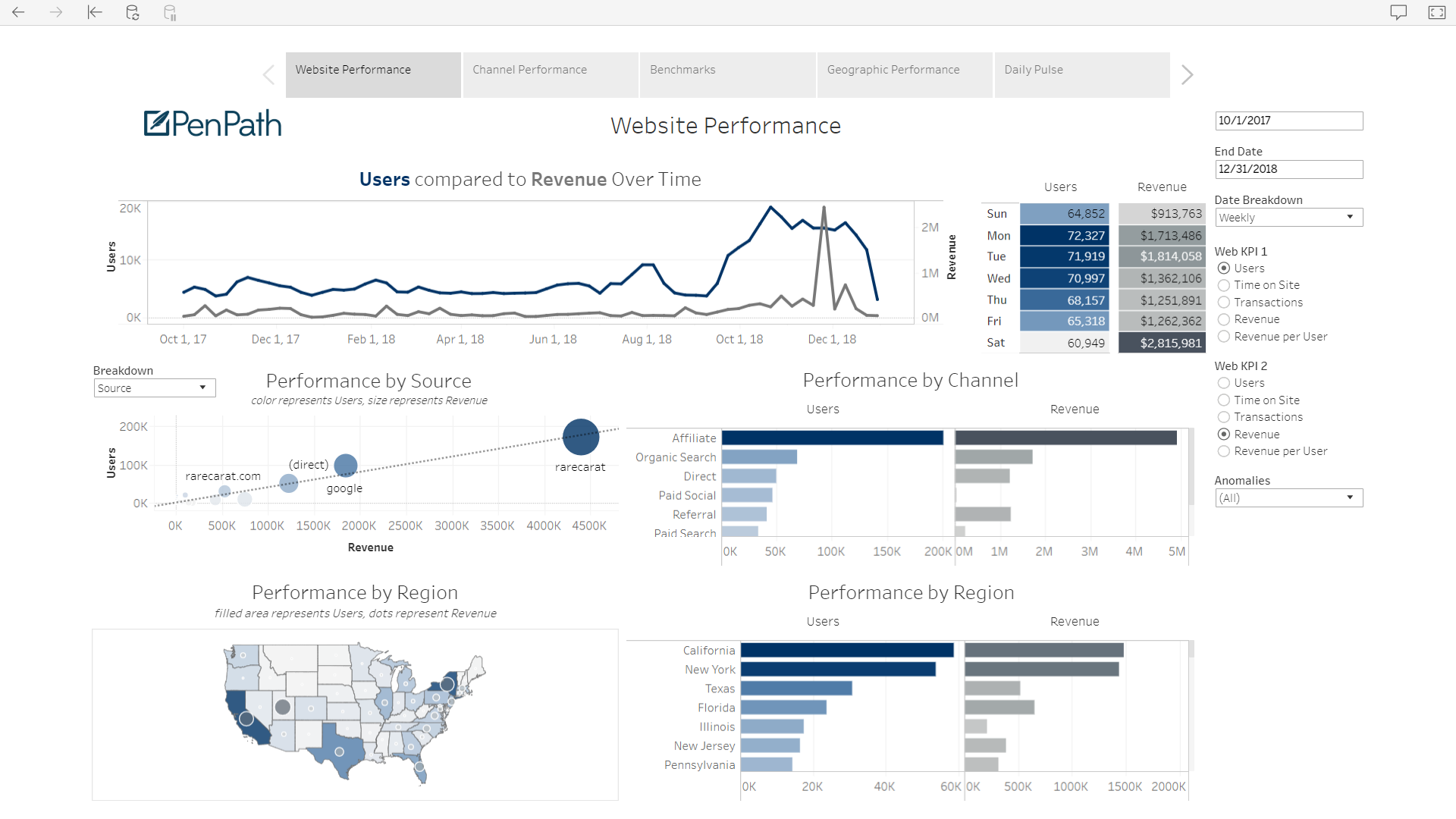 Quick Observations– “Rarecat” is offering the highest revenue and also has the highest amount of users. Is that segment and “rarecat.com” similar? The amount of users per day does not correlate to higher revenue. On Saturday, we had about 60,000 users but had the highest amount of revenue. Our affiliate marketing channel has the most users and also the highest revenue in that time period. What happened on December 1, 2018 to cause that spike in revenue?
Quick Observations– “Rarecat” is offering the highest revenue and also has the highest amount of users. Is that segment and “rarecat.com” similar? The amount of users per day does not correlate to higher revenue. On Saturday, we had about 60,000 users but had the highest amount of revenue. Our affiliate marketing channel has the most users and also the highest revenue in that time period. What happened on December 1, 2018 to cause that spike in revenue?
Benchmarks (Custom View): This custom view was made after talking with the clients and keeping their target metrics in mind. By segmenting by the yearly view, it’s possible to see what progress was made in accordance with expectations. This would be a very good resource for end of year performance and stakeholder presentations. Again, this is a high level view but a more detail oriented view is also possible.
Quick Observations: It would make sense to see this view at a high level, since that’s when you can see a large amount of progress. With the view set to yearly, we can see we’re a little less than 50% in getting total site revenue. That’s a very positive sign. We still need to work on getting more users on the site.
Channel Performance: In this view, you’re able to specifically break channel data by date. This view is especially good for comparing year-to-year performance and progress made. Quick Observations below.
Quick Observations: This is a very positive graph and obviously a lot of progress was made. There was $11.00 for ROAs for Affiliate Marketing- that’s definitely a win. Paid Search has the highest CPC but isn’t bringing us a lot of ROAs. The revenue per user for Paid Search is OK as well compared to the other channels. What should we do to improve this?
Daily Pulse (Custom View): This is your go-to dashboard for seeing all of the main information in one view. This is the view you go to every morning while sipping your coffee to see what’s improved and changed. We call this a custom view as well because it’s up to you what KPIs you want to monitor daily. It’s specific to your company and specific to your preferences, and we’ll make your view according to that.
Quick Observations: It’s easy to jump to conclusions when seeing red, but this view is for a short-term progress report. It’s to see what quick changes need to be made to keep campaigns up and running. It’s for a snapshot visual of how we’re doing right now. Based on this, what changes would you make?
Geographic Performance: Our valuable and active cities are different according to Geographic Performance. The Anomalies drop-down menu is important in seeing what outliers we have (or excluding them).
Quick Observations: In the Website Performance view, we got a glimpse of the fact that the West and East coast, along with Utah were high performing places. Now we see that Ogden, Utah is in a league of its own. Why is there such a difference?
Based on a few minutes, it’s clear that Tableau marketing dashboards and marketing data analytics has tremendous value. What you can conclude in a short amount of time is leagues better than going to several different sources individually. Or worse, trying to combine everything in Excel.
If you’re a marketer that feels Google Analytics isn’t cutting it anymore compared to this, schedule a demo with us. There’s plenty more we have to show you- the options truly are limitless. You’ll also get to see us playing around with these dashboards live (because they are interactive). Our data experts will give you information based on what stage you’re at in advanced marketing analytics and what we can do to help.
We look forward to seeing you soon and taking your company to the next level!

